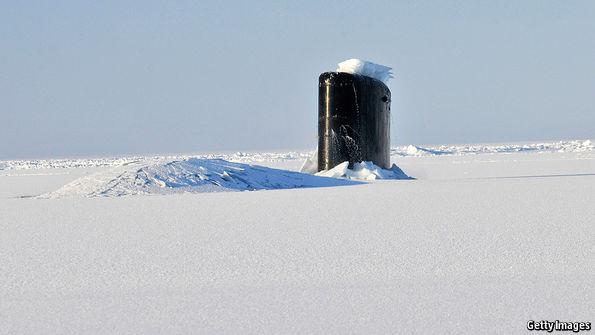The quickest way to break the ice is by submarine

ARCTIC sea-ice is melting. For many that is a source of alarm. But for others, the ice is still not melting fast enough. They would like to give it a helping hand. Clear lanes through the Arctic ocean would permit commercial and naval shipping to travel quickly between the Atlantic and the Pacific. These lanes might also assist the search for oil and gas.
The Russian authorities seem particularly keen on the idea. Last year they launched Arktika, the first of three giant, new nuclear-powered icebreakers intended to help open such routes. But some people think this approach—bludgeoning through the ice with what is, in essence, an armour-plated knife—is old-fashioned. They believe the job could be done faster and more elegantly using a piece of physics called flexural gravity-wave resonance. If they are right, the icebreakers of tomorrow might be submarines.
Resonance icebreaking was discovered in 1974 by Canada’s coast guard, when it began using icebreaking hovercraft able to operate in waters too shallow for conventional icebreakers. At low speeds, these craft work much as icebreaking ships do, by forcing sections of pack-ice in front of…Continue reading
Source: Economist




